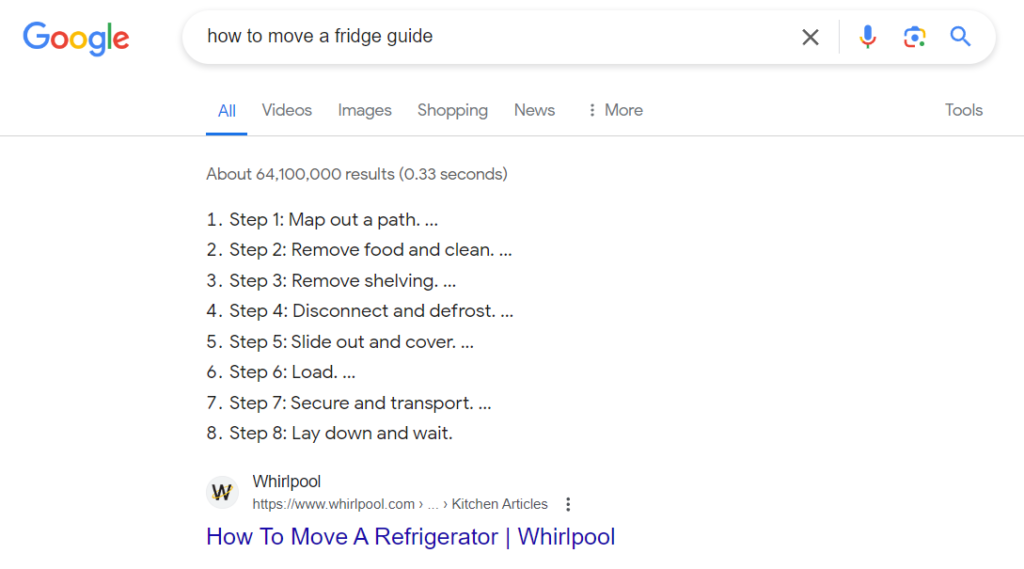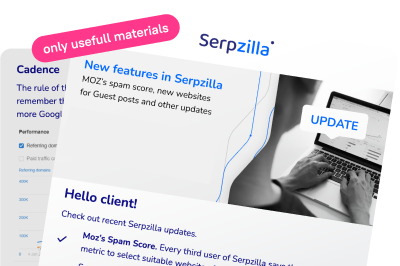Different types of websites require different promotion strategies, and these differences must be considered to successfully develop an SEO strategy and promote the resource. Blogs, startups, and e-commerce sites require a specific approach and understanding of why you are conducting optimization.
This is not about social networks or platforms like Reddit, but about a classic blog on a website – whether it’s a company blog or a personal one. Such a blog can fulfill several important tasks:
- Humanizing the Brand: On sales pages, you can’t afford much freedom; people come to them not to get to know you, but to solve a specific task. But in a blog, a company or specialist can show themselves to those clients who are interested, from the side they choose: professionalism, customer friendliness, technological advancement, etc.
- Increasing Brand Recognition and Trust: Writing a great article about advertising shows your understanding of the subject. Giving a working instruction on how to draw banners means you can likely design one yourself. A blog is also an ideal place to answer potential clients’ questions.
- Boosting the Main Sales Website: Not just about vacuuming up demand through informational long-tail queries and redirecting traffic from the blog to the main site. If the blog is part of the site, its maintenance, i.e., regular updating, sends a positive signal to search engines about the quality of the resource. If the blog has good materials that readers willingly interact with, you also get a bonus to behavioral factors. Even if the blog is on a separate site, you can still benefit.
When promoting a blog, typical serious mistakes are often made that prevent it from reaching the top.
Mistake #1: Content That Users Don’t Need
To promote something, it’s good to make sure it’s needed by someone. In the case of a blog, “it” is content. The problem is that blogs are rarely intentionally invested in. Usually, it’s a side story with the leftovers of time, energy, and budget from promoting commercial pages. That’s why the “Blog” or “Useful Information” sections on most commercial sites don’t look very good.
Typically, the content brief for a blog looks something like this — of course, we’re exaggerating, but not straying far from reality:
“Need to write x texts of n characters about [a list of topics taken from the top-3 competitors – and hopefully from their blogs, not their commercial pages].”
Let’s take, for example, a blog of a company dealing with relocations in Delhi. What list of topics will we get if we approach the task in this way?
- Damage-free furniture transportation.
- Common moving mistakes.
- How to transport household appliances.
This is a problem. From the formulation of the topics, it’s unclear how and what to write about. Let’s take the first topic: “Damage-free furniture transportation.” What furniture – cabinet or upholstered? What to cover – disassembly, packaging materials, the packing process, the loading process, or transportation? Or should you write about how a particular company carefully transports furniture? It’s good if you find a competent author who will torture you with such questions and eventually get a more specific brief.
The topics are too broad. “Common moving mistakes” is a topic for a thick book, not an article of about 5000 characters. Most likely, the author will try to cover as many subtopics as possible, and as a result, you will not get a deep, useful material, but a set of obvious facts.
What to Do?
Before promoting a blog, research the audience’s interests:
- What informational queries related to the business theme are people searching for?
- What questions are discussed on thematic platforms (social networks, forums, blogs)?
- At what points on commercial pages are they currently dropping off? What information do they not trust, what is missing? Other methods can be used, but even these three will be enough. After the analysis, you will understand what to write about so that the content is read. Or, in other words, you will have a list of questions to answer. One question – one article.
Examples of topics that will appear after answering these questions:
- How to pack upholstered furniture before moving.
- What not to forget before moving if you plan to live in another city.
- Preparing a washing machine for transportation.
Then there’s a point in working on the blog. Yes, along with it comes a list of additional tasks that need to be done – and this increases the cost of promotion. But it’s better to have more work that leads to something than less work that only allows you to tick boxes in the list of planned tasks. But not in the list of achieved results.
Mistake #2: Focus Only on SEO
It’s clear that articles need to be optimized for suitable info queries so that they can rank in search results. However, there’s a problem. Or rather, a contradiction. The more narrowly a topic is covered in an article, the more useful information it contains for the reader. The narrower the topic, the fewer suitable key phrases and the lower their frequency – the less traffic it can collect.
That is, the more useful the material for the audience, the less benefit it has for us. Sounds sad.
What to Do?
- First, take the quantity approach. A good informational article is a source of small (if you look at it monthly), but stable traffic. An article on how to pack a refrigerator is unlikely to lose relevance even in 10 years.
- Second, remember that a blog is not just a source of traffic. And its commercial benefit is not only in bringing that traffic. There are surely pages on the site about apartment relocations. Why not add a selection of useful materials with links to them – if they are really useful? If a person is set to order a move from us – it would be good for them to know how to prepare furniture and appliances, what is important not to forget to do before moving, and everything else in this vein. Such materials can help in many ways:
- Answer questions and process objections of the reader of the commercial page.
- Show the company as an expert who knows what problems are to be faced and shows ways to solve them in advance.
- Show the company’s care for customers.
- Not worsen the performance of the commercial page – if you set the links to open in new tabs.
- Third, good materials can be distributed not only through the site. For example, setting up a company subreddit and posting articles from the site is a way to get additional reach. Let it be only 100-200 people a month – but almost for free, not counting the labor costs for posting. This way, you can maximize the investment in content preparation.
Mistake #3: Optimization Without Considering the Type of Content
Informational pages, which include blog materials, have their own promotion features. If you take them into account, the chance of getting traffic will be higher.
What to Do?
- Optimize titles and meta descriptions. In commercial search results, when optimizing the title and snippet semantically, they primarily try to show the user the benefits of the offer, i.e., the product’s USP. With informational queries, a different logic works: the user needs to be shown at least part of the answer to his question – and then the likelihood of a click increases.
Don’t forget about the number of characters. The title should contain 50 to 60 characters, and the meta description – no more than 155 characters. Then the search engine won’t cut them off when showing in the results.
Here’s how not to do it:

But this is very good:

2. Optimize the beginning of the article. That is – give the most concise answer to the reader’s question in the first paragraph, and then reveal the essence in detail. Such an approach can push the text to the “zero” position in the output – that is, to the quick answers that are available in both search engines.

Example of a quick answer in Google
- Optimize alts for images. Google and other search engines index image alts. In particular, they can show results in the image search. Accordingly, this is a chance to get additional traffic. Someone searches for “how to pack a refrigerator” among pictures – and there’s a photo from your blog page. If the picture semantically answers the query – there’s a chance of a transition to the page. And when was additional traffic ever superfluous?
The requirements for alts are standard: briefly describe what is depicted in the picture. Without a list of keywords and technical information like the file name.

- Sign the content and create expert pages. This is an important ranking factor for Google, which uses the E-E-A-T principle: expertise, reliability, authority. Create an expert page on the site, indicate authorship in blog texts, and Google will consider the content more relevant.
Mistake #4: Ignoring the Link Environment Let’s ask ourselves 2 questions:
- How natural can search engines consider a website’s link environment if its informational pages have no inbound links?
- Is it realistic to push a page into the top-10 without links, using only internal factors, in the presence of competition?
Conclusions about naturalness and its consequences are for you to decide. There are as many opinions here as there are SEO specialists. However, the competitiveness of queries is an objective fact. For example, you find a potentially lucrative query: “how to pack a refrigerator”.
But what about the competitiveness of this query? If you look at other search engines’ results, there are quick answers and 5 videos, and pages explicitly optimized for this query occupy at least the top-60. Consequently, you are not the only one who finds this query interesting—there is strong competition in the search results. Where there is competition, influencing all promotion factors, including inbound link mass, is essential.
This fact is confirmed by years of observation. Using Serpzilla, various platforms, including blogs, are promoted. And we see which strategies lead to success and which only lead to budget waste. From experience, we can say that an informational platform is no less demanding on links than a commercial one with comparable competition. If you choose a competitive query, buy links to gather an audience from search.
To ensure the link weight is not wasted, you can organize internal linking of the blog with commercial pages. Thus, the benefit from the purchased links goes to both the blog materials and service pages.
Mistake #5: “Irrelevant Tail” Illustrations
It’s not just about using good quality images in the right format and size, which is equally important for both commercial and informational pages.
The subtlety lies elsewhere. For instance, what do you think of an image like this in an article “How to Transport a Refrigerator”?

Why is it needed? To show what a refrigerator looks like? To show that refrigerators come in different colors? Or that they are sold in stores and there are many of them?
In reality, there is no answer to “Why?”. But there is an answer to “Why not?”: “Well, the article needs some image, and this was available for free.”
What to do?
Look for images that illustrate the article’s content. If we write about how to pack a refrigerator, we definitely need photos of the process and the result. You can source them from several places:
From the client. Explain why you need these photos and ask about options to get them. If the client understands, you can ask a team of movers to take a few pictures on their phone when they are transporting a refrigerator. Yes, they are unlikely to be high quality: some blurry, with skewed horizons and silly backgrounds. The point is not beauty but utility. But they will practically show what you are writing about.
Do it yourself. If it’s your blog or your company’s blog. Photos, screenshots, short videos—it’s easy to make them, and they are very useful. Imagine reading this article without images?
Order separately. Writing this subtitle, we felt the budget tightening in fear. Yes, it’s not cheap. A product photo shoot, especially with a location, starts from 100 dollars. But for an image-focused blog, whose main task is to show the company’s coolness, this option is the best.
In summary
Managing and promoting a blog offers many benefits—only if the correct approach is taken:
- Analyze the audience’s interests and create “targeted” content. Follow the principle “One question or problem of the audience—one article.”
- Don’t rely exclusively on SEO. Good content can promote the company in various ways—for example, links to suitable blog articles can be placed on commercial pages.
- Remember the specifics of optimizing informational content. This can, for example, lead to more coverage and traffic due to appearing in Google and other search engines quick answers.
- Despite potentially low traffic on a single material, don’t forget to optimize H1, meta tags, and image alts.
- Allocate a budget for link promotion of articles. At least those where you managed to find keywords with potentially interesting demand.
- Remember, even the most well-written text is not a panacea. For content to be in demand by the audience, it needs images that illustrate the key ideas.



